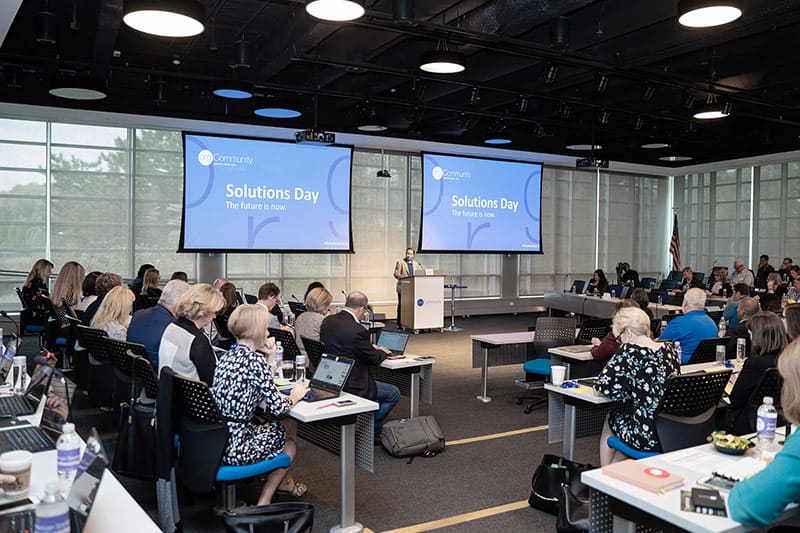
Remember Blockbuster? Technology eats business models for breakfast.
In 2016, I wrote a post titled, “Could Membership Organizations Become a Dying Model?” This article still has a top slot in my site’s analytics. It seems the question isn’t settled. But time and technology have me looking at the issue through a different lens.
Six years ago, when I was thinking about the association industry’s future, I wrote this:
The value for associations today is about experience, engagement, and service. To thrive, it will take much more than collecting dues and publishing a magazine. Organizations need to extend their thinking and “walk in their members’ shoes” to understand their needs. . .
Associations must think about what is “next” in the industry they serve and how they provide new value. It is important to create customer engagement teams, dedicate resources to respond to customers on social media, and be where their customers are both online and off.
Customer centricity is an essential component of successful business. But back in 2016, not every organization had the means to accomplish that goal. Today, digital solutions are widely available. Even small associations can understand their members’ needs and preferences at a granular level. Here is the catch. To use these tools effectively, different operational strategies are needed.
I don’t believe that the membership organization is a dying model. But its traditional structures are rapidly crumbling under the weight of customer expectations for innovation and growth. To remain relevant associations must design staffing configurations that keep pace with digital markets. Even if you have the latest software and hardware; digital transformation, or the ability to use technology to deliver member value, can’t happen without operational and cultural shifts.
Make Digital for Everyone
A strong endorsement from the top is the first non-negotiable. The biggest barrier to digital success is imagining that anything ‘digital’ is someone else’s responsibility. Every part of the organization has a role to play, and the CEO must take the lead.
Leaders articulate the vision that compels teams to follow. Executives who defer this responsibility to the IT staff or the management team convey the message that digital thinking is not a company-wide priority.
The CEO must be the first digital evangelist. The job requires an energetic management style that leaves dust around anyone who commands the conference table from the depths of an oversized swivel chair. Digital leadership means rolling up your sleeves and getting comfortable with being uncomfortable.

The position is incompatible with working in a hierarchy. It requires new ways of viewing operations. Not the least of which is letting go of the idea that you are at the top of the pyramid and instead seeing yourself as the foundation. Even CEOs who are prepared to reshape the organization may need to adjust their own behavior and thought processes.
If this isn’t the job description you signed up for, know that there are significant perks to making it your own. Ideas travel faster on a flatter path. When you empower employees to think creatively, they will not disappoint. And, in a digital organization, the leader is not alone. I can’t emphasize this enough, using technology to deliver member value is a shared responsibility.
Design a New Team
CEOs need a different kind of support team to promote this concept. There are three unique roles. The group should include a strategist, an innovator, and a driver of digital solutions, or, if you are lucky, several people could represent each of these focus areas.
These important employees need not be part of the IT staff. And, while a large organization might combine the roles into a full-time position, it’s not necessary. Digital responsibilities can be woven into the fabric of other activities. The most important qualifications are a passion for problem-solving, innovation, and discovering new ways to provide better member service. Additionally, it’s critical to select employees who are admired and respected enough to have a positive impact across the organization.
The team are influencers who drive the association toward creative approaches to technology. Dawn Briskey, .orgSource Vice President of Client Services, has guided multiple organizations through digital transformation. She described the group’s potential impact like this:
“In a constantly changing world, associations need staff and member leaders who are curious and connected to diverse groups, and who are using the most popular technologies. They need a process to share and vet ideas they see elsewhere and to consider how these concepts can be used to grow their organization.”
“A digital strategy task force or committee can also tap into younger members to understand their perspectives and what is possible. They can brainstorm about what is successful outside of the association world and offer a channel for all voices to be heard. Associations must move beyond looking at the obvious examples like Amazon for e-commerce and consider all the ways digital/social are transforming our world.”

The Strategist
The strategist is a visionary, facilitator, and problem-solver. This person inspires digital curiosity throughout the organization. Their responsibility is to understand technology trends inside the association industry and across the business spectrum. The goal is to constantly scan for developments to improve the delivery of products, services, and education. Customer centricity is the highest priority.
The strategist needs a deep understanding of the organization’s operations and goals along with the insight to redesign work for improved outcomes. This employee should be pivotal in developing a strategic plan that weaves technology through every endeavor. The role requires a relationship builder who can make collaboration and bridging departmental initiatives exciting and meaningful.
The Innovator
The innovator is a rule-breaker and a disrupter who has no patience for the status quo. “Yes, and” should be their favorite phrase. This is the person who sweeps away old thinking and encourages discovery. The innovator helps the strategist to see in unique ways and make the leap from idea to process. Innovators seek to expand business and find new initiatives. Their enthusiasm inspires others to view their work from different perspectives.
The Driver
The driver keeps the strategist and the innovator grounded. The driver is knowledgeable about resources and can organize projects, develop budgets, and create timelines. Drivers take ideas from the drawing board to action. They monitor progress across departments and keep new initiatives on track. This role should be filled by someone who can act quickly and be agile. When the need to pivot arises, drivers have the experience to orchestrate a change in direction.
Settle the Question
There can be various configurations of these roles and responsibilities. The point is they are directed to identifying, inspiring, and delivering the opportunities and business that will sustain associations. I believe that membership will continue to be meaningful if individuals find professional advantages in your offerings. However, I’m not sure that we’ve settled the question. Success depends on the innovators, drivers, and strategists to mobilize teams to build a relevant future.


